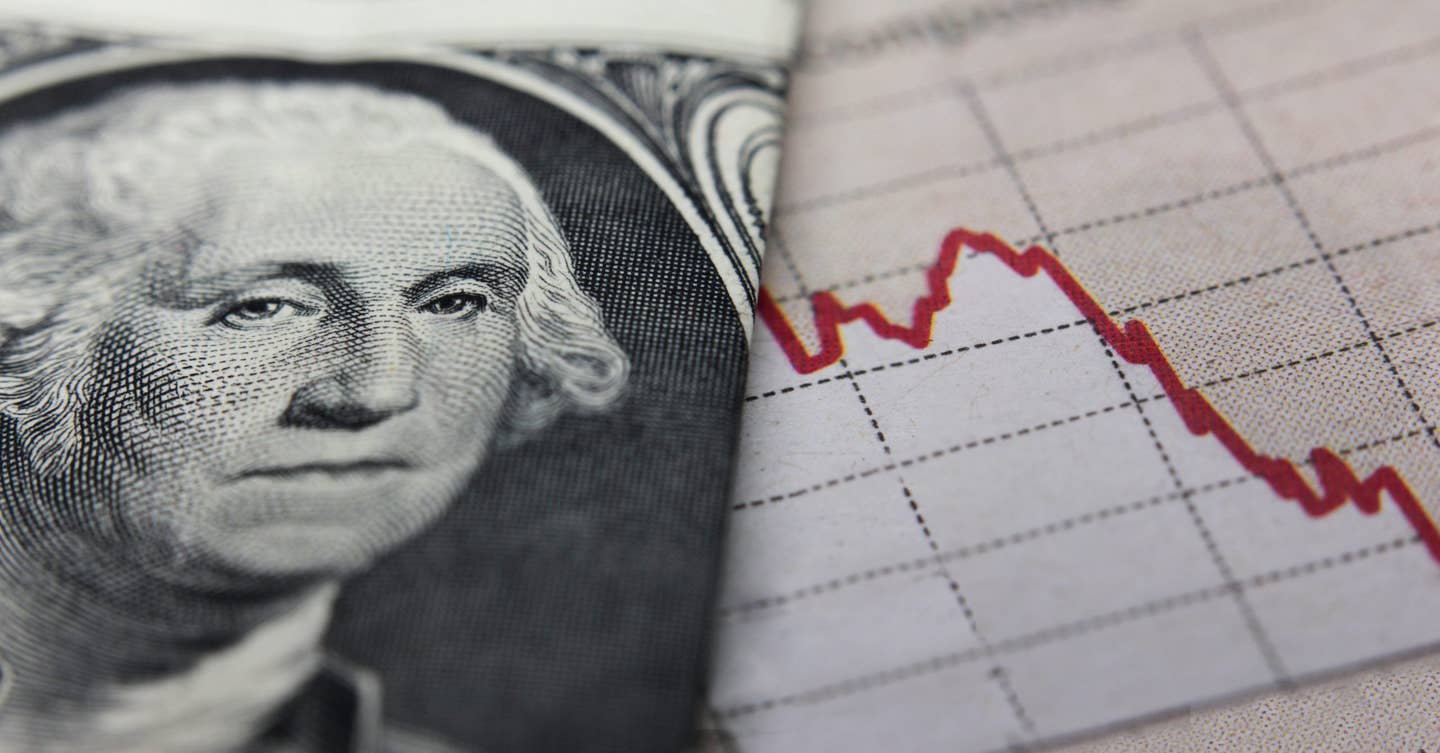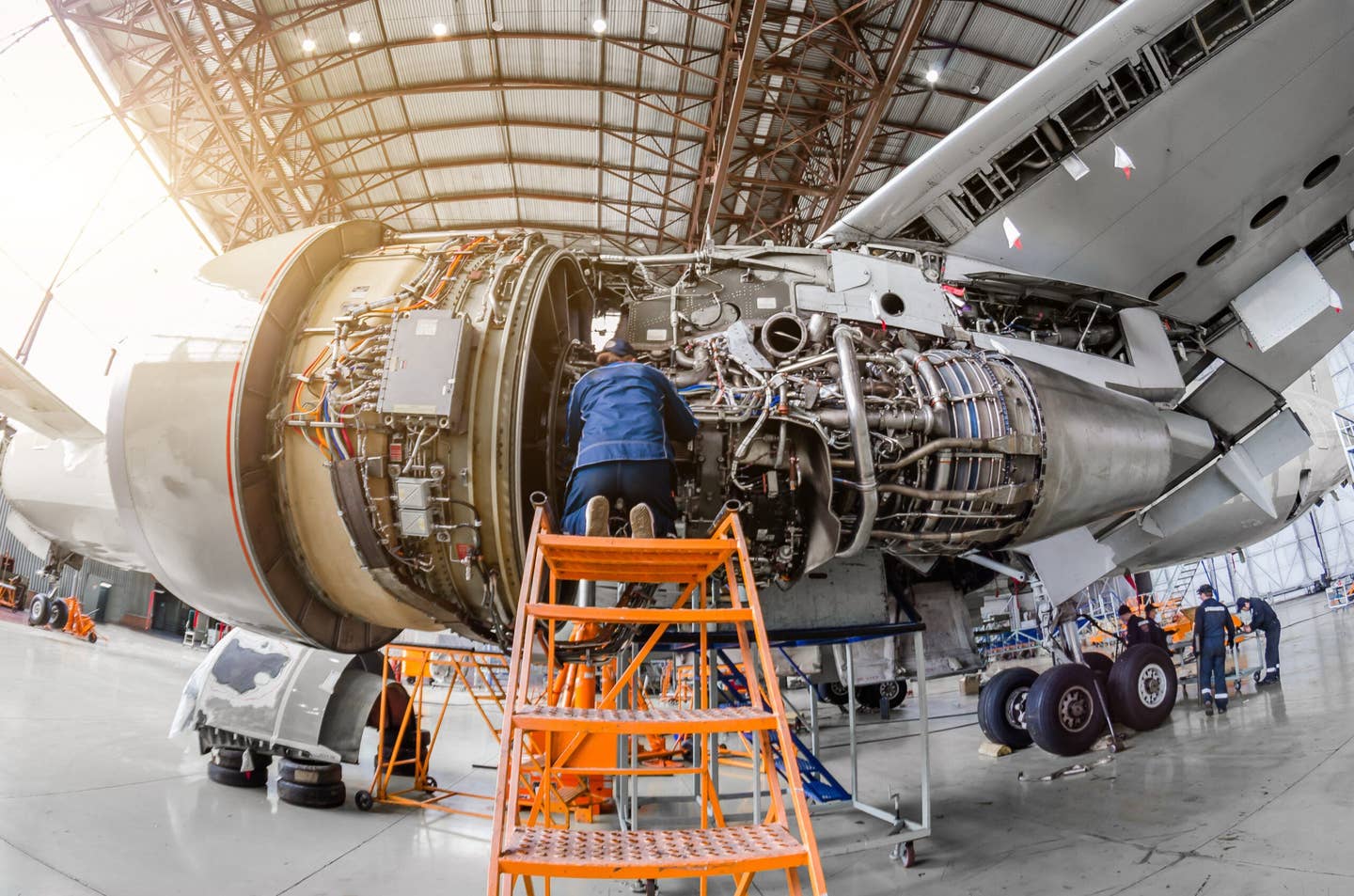
Are stocks or savings better for you? It depends on how risky you want to be. Adobe Stock
We’ve decided that the returns a pilot can get by investing in things like stocks and mutual funds are far better than the meager interest rates paid by savings accounts. If the advantage of investing is so obvious, why do savings accounts even exist?
The answer is simple: risk.
Savings Security
The U.S. government insures any money you have in a savings account, up to $250,000. If your bank were to fail, you could still get your money from Uncle Sam.
Though it’s practically unheard of today, FDIC insurance exists because hundreds of American banks have failed. Most of this happened in the 1930s, or earlier, long before strict government regulations were enacted for your protection. If you absolutely cannot afford to lose your money, an FDIC-insured savings account is one of the safest places you can keep it.
So Why Stocks?
While money in a savings account is safe from something like a bank failing, it’s never going to earn much interest. In fact, even if your account balance increases over time, the actual value of your account will likely decrease because inflation is almost always greater than the interest rate offered by a savings account.
Stocks, mutual funds, ETFs, and other investments are the only options for potentially earning higher interest on your money. The problem is that individual companies can founder, or even fail. When that happens, the value of a company’s stock decreases. Worst case: a company goes bankrupt and your stock’s value decreases all the way to $0.
There’s no such thing as FDIC insurance for a brokerage account. If your stock becomes worthless, you’re just out of luck.
Mitigating Risk
We pilots are experts at evaluating and mitigating risk; we do it every time we fly. We train to be able to handle challenging conditions like crosswinds. If those crosswinds aren’t too bad, we accept them and land. If they’re worse, we’ll choose a different runway, possibly at an alternate airport. If we know ahead of time that they’ll be too strong, we just choose not to fly.
When deciding how to set up our savings, we also evaluate and mitigate risk. We know which companies have shown many years of strength and stability. We predict that the chances of these corporations going bankrupt are low, meaning we’re less likely to lose our money.
The bigger and stodgier a company gets, the less likely it is to come up with flashy innovations that trigger rapid growth. This means a big company’s stock price isn’t likely to rise as quickly as the latest tech startup. We accept this lower return in exchange for a reduction in the risk of losing everything. Or, maybe we accept the risk of that impressive startup failing, because as long as it survives our money will grow like crazy.
Our overall savings plan doesn’t have to be all-or-nothing. It’s generally a good idea, especially for a starting investor, to keep some money shielded in a boring old savings account, or other less risky investments, while simultaneously using the rest of our money to chase higher returns with stock investments. The beauty of modern, online investing accounts is you get to decide exactly what you invest in.
Risk vs Volatility
Thankfully, it’s pretty rare for a company to go completely out of business in modern America. Yes, Lehman Brothers and some others went bankrupt in 2008, but the vast majority of big-name banks and investment firms who also contributed to the housing market crash survived. Their stock prices dropped but have since recovered.
Let’s say a pilot, Neil, owns some shares of Southwest Airlines (NYSE: LUV). If you bought your shares before 2013 when they had never been priced higher than about $23, you would have been thrilled to see them valued at more than $60 at various points in 2017-18.
Then, the Boeing 737 Max debacle sent Southwest’s shares tumbling before the COVID pandemic shut down almost all air travel and shares of LUV dropped below $24.
If you needed to sell your shares of LUV in April 2019, you would have been in big trouble. At best, you basically broke even with the high price from 2013. (And remember, inflation means those $24 were worth far less by 2019.) At worst, you bought LUV around its high above $60 and lost as much as 63 percent of your money when you sold.
I sincerely hope you didn’t have to sell though. LUV is close to $50 per share again, with recent highs above $60.
This illustrates two critical points about stock investing:
- You only lose money when you sell.
- The stock market can be volatile.
Every time the stock market drops, thousands of investors panic and sell shares of stock at rock-bottom prices. They lose all kinds of money. Unless a given company fails altogether, it’s likely those share prices will eventually recover, just like they have for Southwest.
Unless you believe a company faces imminent bankruptcy, your best bet when share prices drop is to do nothing. (Actually, your best bet is to buy more shares when they go on sale. Investing genius Warren Buffet said this another way in his 2004 letter to his shareholders: “… be fearful when others are greedy, and greedy only when others are fearful.”)
When naïve investors talk about “risk,” they’re usually talking about share-price volatility. They cite this as a reason to not invest in the stock market. At this point we know better, right?
Share prices always fluctuate. The risk lies in exhibiting an emotional response to that fluctuation and selling.
Ideally, when you buy a share of stock or a mutual fund, you won’t sell it for a very long time. That time horizon should be far enough away that you can wait to sell until the price of the particular shares you want to sell have risen to a favorable level.
Diversification
We don’t always have the luxury of waiting to sell our holdings. Once you retire, you’ll have to sell some of your investments each month to fund your regular spending. The key here is to have a variety of investments in different securities that respond differently to market forces.
Share prices for all airlines dropped during the COVID pandemic, but shares of grocery and delivery companies did very well. A retiree invested in both could have profited from selling high-priced shares of Amazon and DoorDash in 2020, while waiting until this year when airline stock prices started recovering to sell them.
This idea of spreading out risk is called “diversification.”
Some naive investors (and bad financial advisors) will try to tell you that diversification increases your investment returns. They’re dead wrong. You’d make the most money by investing all your funds in the one company that will gain the most value in a given timeframe. Every dollar you put into some other company reduces your returns.
Diversification is a way to mitigate the effects of volatility, a way to reduce your risk of needing to sell when the market is down.
Buying stock in a variety of different companies is one way to diversify. As we’ve discussed before, low-fee index funds are the easiest way to get this done. We can also diversify by investing in things other than stocks. We’ll explore a variety of other investments in the future.
Jason Depew flies as a captain for a major U.S. airline. He is also a U.S. Air Force reservist and has flown more than 300 combat missions over Afghanistan and other garden spots. Based in Tampa, Florida, he instructs in the Icon A5 and anything else he can get his hands on. His writing is focused on personal finance for pilots with the goal to help all types of aviators enjoy great careers, sometimes in spite of themselves. You can send Jason questions at editorial@flying.media.
Editor’s Notes: Investing in the stock market doesn’t guarantee returns. The opinions expressed here do not constitute endorsement by FLYING.

Subscribe to Our Newsletter
Get the latest FLYING stories delivered directly to your inbox






